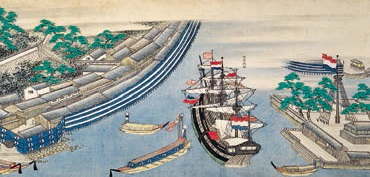Overview
The Historiographical Institute has an extensive collection of documents, diaries, and other historical materials, including a National Treasure and designated Important Cultural Properties. The Institute also maintains an up-to-date collection of modern scholarly monographs and academic journals related to Japanese history. All of these items are cared for and managed by the Institute's Library.
A wide variety of materials can be accessed in the Institute library. These include original documents, replicas, photo reproductions, microfilm and sheet-film copies, and CD-ROM materials. The Institute is particularly proud of its strong collection of original materials, acquired over the years through gifts, purchase, and government designation. In addition, all of the tools needed for research on Japanese historical materials can be found in the library, including general and specialized reference works, as well as books and journals in Japanese and Western languages.
To encourage historical studies both within and outside of the university, the library lists many of its holdings with several Internet database search services, including OPAC (the database of books and journals held in the University of Tokyo) and CiNii (a compilation site for libraries throughout Japan), and HI-cat (Historiographical Institute Catalog).
The Institute's library welcomes scholars who wish to use the collections for their research, though certain restrictions apply.
| BOOKS | 209,524 volumes |
|---|---|
| HISTORICAL MATERIALS including 1 National Treasure and 16 designated Important Cultural Properties |
200,356 items |
| REPRODUCTIONS CREATED BY THE INSTITUTE | 118,360 items |
| JOURNALS | 3,134 titles |
| FILMS | 67,017 items |
Collection
The Institute's collection includes many rare and unique items. Among them there are one item of National Treasure (kokuho) and sixteen items of Important Cultural Properties (juyo bunkazai), that have been designated by the Cultural Affairs Agency. Also there are sixty-three special collections, and many other particularly fragile and valuable historical materials. Such items receive special attention at the Institute, including storage in special shelves made of cypress wood to limit light exposure and inhibit insects. For items which are in high demand, photographic reproductions have been created to minimize wear on the original materials. Please contact the Library for further information.
Taiki
A diary of Fujiwara no Yorinaga, a late Heian courtier (12th century).
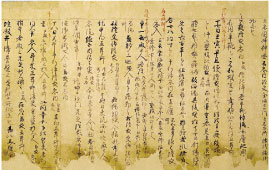
Owari Province Petition
This is originally from 998. This copy is dated 1311. This 31-article petition was presented to the court by district officials and peasants in the Owari Province (modern Aichi Prefecture), accusing the provincial governor, Fujiwara no Motonaga, of unlawful conduct and demanded his immediate dismissal.
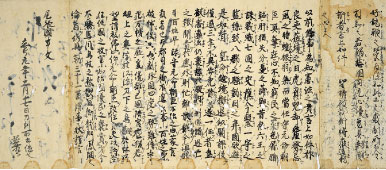
Sanetaka-Koki
A diary written by Sanjo-nishi Sanetaka (1455-1537), a late Muromachi Period courtier.
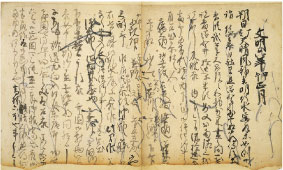
Documents of the Irikiin Family (12-17th century)
This collection was preserved by the Irikiin family in the Satsuma Province (modern Kagoshima Prefecture). Because of an early translation of these documents into English by Prof. Asakawa Kan'ichi (1873-1948) of Yale University, they are also well-known in the West as sources for the comparative study of feudalism. The Historiographical Institute has produced database and CD-ROM versions of this collection.
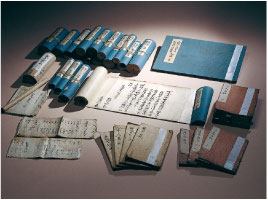
An Important Cultural Property – the “Jichin Kasho Musoki”
The “Jichin Kasho Musoki” (“Dream of the Monk Jichin”) is a work that records a “dream” of Jien (1155-1225, also known as Jichin Kasho), the Senior Abbott of the Tendai Sect of Buddhism during the late Heian period and early Kamakura period. Jien is famed for his historical work “Gukansho” (“Jottings of a Fool”), in which he vividly outlines the historical events of his own era, describing the political developments from his perspective as a scion of the important Fujiwara family of regents, and reflecting on the forces that drive historical change. The work is best known for a section which comments on the transfer of effective power to the warrior class in the aftermath of the Hogen Rebellion of 1156. However, the work also has immensehistorical importance because of the way it uses the impact of the loss of the Kusanagi sword (one of the three Imperial Regalia of Japan) during the climactic battle that saw the downfall of the Taira (Heike) clan in 1185 to develop a philosophical approach aimed at explaining the emergence of the new era in which the warrior class was now dominant. This ancient handwritten manuscript, which may have been written by Jien himself, was formerly held at the Shoren-in Temple in Kyoto, to which Jien bequeathed it. In 2014, the work was designated by the Japanese government as an important cultural property.
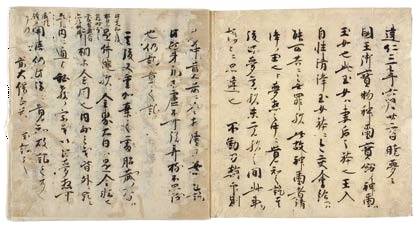
Wako Zukan: Picture scroll of Japanese Pirates (early 17th century)
Late Ming Chinese picture scroll (color on silk) depicting a raid by "Japanese" pirates (wako) on the China coast, it shows how the wako arrived in fleets, pillaged, burned, and fought with Ming government troops.
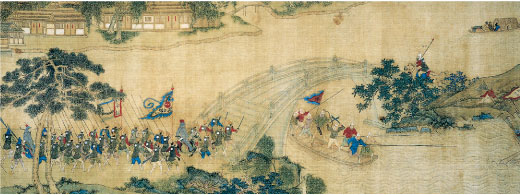
Haedong Chegukki (J., Kaito Shokokki)
Record of the Countries East of the Sea in 1471 (Printed in Korea, 1501) Compiled by Sin Sukchu on the orders of King Songjong of the Choson dynasty, Haedong Chegukki comprises descriptions of Korea's historical relations with Japan and the Ryukyu kingdom, the rules for receiving embassies from both countries, historical and contemporary (i.e., mid-fifteenth century) information about Japan, and maps of Japan and the Ryukyus.
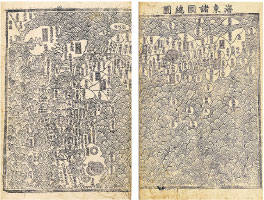
Tawarakasane Kosaku Emaki: Picture scroll depicting Agricultural Scenes (16th-17th century)
This scroll, composed from the lord's viewpoint, comprises eleven scenes in the agricultural cycle as sowing, harvest, and the delivery of taxes to the lord's agents. The title, Tawarakasane, which means "to pile up bales," reflects the lord's interest in seeing his taxes piled in his storehouse.
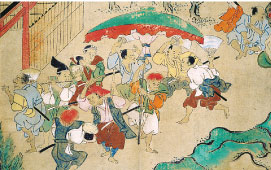
Documents of the Shimazu Family (12th-19th centuries)
This is a vast collection of documents (about 17,000 items) owned by the Shimazu daimyo family of Satsuma, in southern Kyushu. The Shimazu, who was dispatched to Satsuma as land stewards in 1192 for the first time, and survived as daimyos until the overthrow of the Tokugawa shogunate in 1868. These documents were designated a National Treasure in 2002.
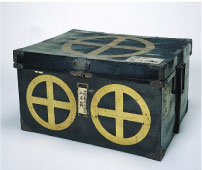
Documents of the So Family (17th-19th centuries)
This consists of almost 3,000 office logs, official diaries, letters, and other papers from the archives of the Edo mansion of the Tsushima clan.
Tsushima, an island domain in the straits between northwest Kyushu and southern Korea, had strong ties with Korea because of its geographical location and its economic dependence on trade. The daimyo of Tsushima, the So family, were entrusted by the Tokugawa shogunate with the everyday conduct of Japanese diplomatic relationship with Korea, and they monopolized the trade.
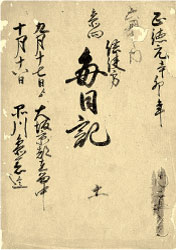
Picture Scrolls of the Arrival at Nagasaki of Nikolai P. Rezanov, Russian Envoy Extraordinary to Japan
Rezanov (1764-1807) came to Nagasaki in 1804 on the Russian warship Nadeshda in order to open commercial relations between Russia and Japan. After negotiations which lasted six months, he went away without accomplishing his purpose.
